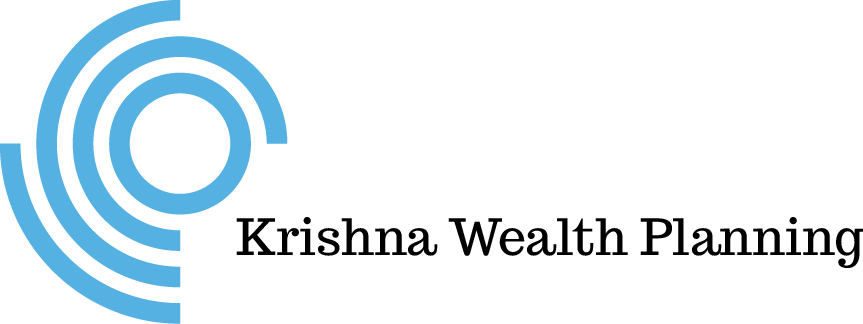6-Minute Read
“Quality both demands slowness and enables slowness.”
- Cal Newport from Slow Productivity
As a financial planner, I find value in exploring topics indirectly related to personal finance. One such topic is productivity. In a previous article, I discussed how you can improve productivity by Reversing Parkinson’s Law. While productivity is often emphasized at a country level (through GDP) or a company level (through earnings reports), today, we will talk about personal productivity.
Boosting your personal productivity has at least two benefits. First, it can increase your earnings power, thus improving your quality of life and helping you achieve financial independence sooner. Secondly, there is an intrinsic satisfaction that comes from producing high-quality work that positively impacts the lives of those around you.
Cal Newport has been helping students and professionals become more productive for two decades. Usually while driving, I enjoy his podcast, Deep Questions. In his latest book, he explores an interesting concept called “Slow Productivity.”
Consider this month’s blog somewhat like a book review as I try to extract the benefits and obstacles to slow productivity.
Measuring Productivity is Harder than Ever
If you work in a company that conducts performance reviews, you may be able to relate to the challenges faced in measuring productivity.
The nuance and sophistication of knowledge work require immense time and effort to identify and reward productivity properly. Even prominent, data-centric companies like Google faced years of challenges trying to get this right in their decisions to promote the best people.
Measuring productivity in knowledge work is difficult because it is not as straightforward as perhaps compared to earlier industrial eras, where counting the number of widgets produced per hour was a decent benchmark for productivity.
In modern workplaces, visible activity often serves as a proxy for real productivity, a phenomenon Newport calls pseudo productivity. Looking busy, being responsive to calls and emails, and being the first to arrive or last to leave the office are often mistaken for actual productivity.
An interesting (and somewhat disturbing) innovation came during the pandemic when many knowledge workers were forced to work remotely. It was called a mouse mover. If you were not in front of your computer, this device made it look like you were active by constantly jiggling your mouse. With some luck, you might have been able to fool your company’s IT tools used to track employee activity.
This is a tough area to generalize, and the context of your work matters here. But productivity based on activity alone is usually counter-productive and demoralizing if it’s a work style forced upon you.
Another challenge in the modern workplace, even if you’re not judged on pseudo productivity, is what Newport calls an “overhead tax.” When the number of your obligations reaches a certain level, you can reach a point where all your cognitive efforts are spent managing the status of those obligations.
The problem with the overhead tax is that you truly are busy. You’re not engaged in tasks to simply look busy. Nevertheless, you might struggle to make meaningful progress on your most important projects. I venture to guess this has happened to all of us at some point in our professional lives.
The Three Tenants of Slow Productivity
How should individuals and organizations navigate challenges like pseudo-productivity and overhead tax? Perhaps it’s by embracing a slower approach and resisting the hustle culture. Here are Newport’s three core ideas for implementing slow productivity:
Definitions
One – Do Fewer Things: Strive to reduce your obligations to the point where you can easily imagine accomplishing them with time to spare. Leverage this reduced workload to fully embrace and advance the small number of projects that matter most.
Two – Work at a Natural Pace: Don’t rush your most important work. Allow it instead to unfold along a sustainable timeline, with variations in intensity, in settings conducive to brilliance.
Three – Obsess over Quality: Obsess over the quality of what you produce, even if this means missing opportunities in the short term. Leverage the value of these results to gain more freedom in your efforts over the long term.
Skepticism
After reading the three definitions, what do you think? Are you doubtful that slow productivity can apply to your own work? While appealing, the principles may appear unrealistic and not aligned with how you typically get things done. Furthermore, they may seem counterintuitive towards reaching your professional and financial goals.
In the book, most of Newport’s examples of success come from creative fields such as writing, art, and music. For instance, a writer may have a lifestyle and working environment more suited to following the three principles than an emergency room physician.
Most of us don’t earn our living solely from creative fields, though participating in any of them for fun can provide other enriching benefits. Newport acknowledges that we can’t hope to copy these people’s lives, but we can learn from them. What can we do to imitate some of their practices and behaviors?
Questioning the Status Quo
You probably think about your work frequently. But how often do you think about how you’re doing your work? Here are a few questions to ask yourself to build a slow productivity mindset.
Do you believe that less is more? At first, doing fewer things may seem easier said than done. Similar ideas are advocated in other worthwhile reads like Greg McKeown’s Essentialism and Gary Keller’s One Big Thing. A “less is more” approach can go beyond being more productive. It can improve your physical and mental health.
It’s worth recognizing that humans have a bias in that we underestimate the amount of time it takes to complete things. They call that the planning fallacy. You can either resist this and say it doesn’t apply to you or embrace it and simply choose to do fewer things.
One of Newport’s simple tips is taking your to-do list at the beginning of the day and scratching out 25 percent of the tasks. But on a larger scale, he advocates for reducing the number of your missions and projects.
This is not about curbing your ambitions. It’s about narrowing your focus on the projects that matter the most. Focusing on two or three projects instead of nine or ten, you might get things done faster and at a higher quality level.
Are there times of the year when you can deliberately slow down without risking rocking the boat within your company? You may face obstacles, but trying to figure out how to build slow seasons into your year is worth it. You’re not meant to be working at full intensity all the time.
Can you find different places to do your deepest and most meaningful work? If you have a primary office space where you handle all your day-to-day tasks or meet with clients, it may be difficult to use that space to do the work that will drive your long-term success.
When I was an engineer, I remember many times I’d struggled with a problem for hours in the office. As soon as I entered a different environment, finding a creative solution became much easier.
You might need to experiment to see what works for you. Escaping to an area with nature and beauty is ideal, but sometimes, any new environment will do the trick.
If you want to produce a higher quality product or service, are you willing to pay the price?
Newport’s book may be worth a read just for the story of the singer/songwriter Jewel. Her journey to stardom was remarkable. She could have chosen the quick path to fortune and fame. But she chose a slower approach and ultimately embodied the definition of obsessing over quality.
Slow Productivity May Be Slow to Adopt
As you become more productive, you may notice more opportunities coming your way. The irony is that the more opportunities you have, the harder it can become to do the things that made you productive in the first place.
Paul Jarvis, the author of Company of One, describes opportunities as obligations disguised in an appealing mask. To maintain your productivity, you must diligently avoid distractions and say no to unnecessary obligations.
If you prefer a slow productivity approach, you may need to consider other factors that can affect your success, such as your level of autonomy in your position. If you have bosses or managers, it’s essential to determine how much (if at all) they’ll fight to protect your time and attention.
Although slow productivity is a valuable pursuit for individuals, it may not gain traction until more companies, governments, and organizations see its value. Slow productivity has value as a stand-alone philosophy, but it needs to complement and enhance other successful productivity systems currently in use.
Ultimately, slow productivity represents a forward-thinking vision of how work should be, even if few of us have fully adopted its principles yet. I’m excited about the societal and economic benefits that could result if the status quo ever shifts. Maybe the time for that shift is now.
If you have comments or questions on this piece, please drop me a line at: [email protected]
References
- https://krishnawealth.com/increase-your-productivity-by-reversing-parkinsons-law/
- https://calnewport.com/podcasts/
- https://calnewport.com/my-new-book-slow-productivity/
- https://gregmckeown.com/books/essentialism/
- https://the1thing.com/book/
- https://www.amazon.com/Company-One-Staying-Small-Business/dp/1328972356
The information on this site is provided “AS IS” and without warranties of any kind either express or implied. To the fullest extent permissible pursuant to applicable laws, Krishna Wealth Planning LLC (referred to as “KWP”) disclaims all warranties, express or implied, including, but not limited to, implied warranties of merchantability, non-infringement, and suitability for a particular purpose.
KWP does not warrant that the information will be free from error. None of the information provided on this website is intended as investment, tax, accounting or legal advice, as an offer or solicitation of an offer to buy or sell, or as an endorsement of any company, security, fund, or other securities or non-securities offering. The information should not be relied upon for purposes of transacting securities or other investments. Your use of the information is at your sole risk. Under no circumstances shall KWP be liable for any direct, indirect, special or consequential damages that result from the use of, or the inability to use, the materials in this site, even if KWP or a KWP authorized representative has been advised of the possibility of such damages.
In no event shall KWP have any liability to you for damages, losses, and causes of action for accessing this site. Information on this website should not be considered a solicitation to buy, an offer to sell, or a recommendation of any security in any jurisdiction where such offer, solicitation, or recommendation would be unlawful or unauthorized.





